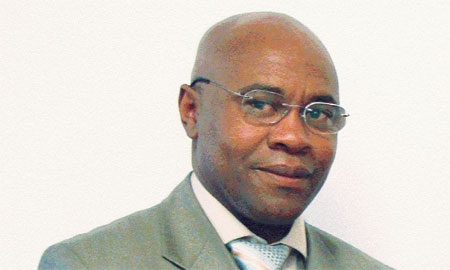Angola is geographically larger than Texas and California combined. A country that size needs a well functioning aviation sector to permit people and goods to be moved quickly and efficiently, and to bring its far-flung regions closer together.
The National Company for the Exploration of Airports and Air Navigation, or ENANA in its Portuguese initials, is in charge of running Angola’s airports and its aviation network, and has overseen the reconstruction and improvement of the country’s air transport infrastructure. The agency is very aware of the importance of its work to Angola’s economic growth and its people’s lives.
“No country can be developed without good air transportation, especially when we are speaking about a huge country like Angola, with the enormous needs of its people, entrepreneurs and executives,” says Manuel Ferreira de Ceita, ENANA’s general director. “A good relationship amongst all parts of our transportation infrastructure can only benefit the existence of other forms of transport because at the end of the day the country develops itself in many different ways simultaneously.”
ENANA has carried out many different reconstruction projects around the country, none more important than the rehabilitation and improvement of Luanda’s 4 de Fevereiro airport, the gateway to the country’s capital and by far its biggest city, more details of which are given in the above article.
Angola is of course far more than just Luanda, and it’s ENANA’s work around the rest of the country that is really helping improve the standard of living of Angolans. The agency is in the middle of a program to refurbish and modernize the facilities and equipment of about 30 large, medium and small-sized airports across the country, with a budget of about $400 million.
“When we started the reconstruction process, previous surveys were used, new studies were made, and the projects were planned in detail,” says Mr. Ferreira de Ceita. “ENANA followed the entire reconstruction process closely. We surveyed and inspected its progress and today we can say that we are happy with the results because our work is well structured.”
The new facilities, and their new and modern air traffic equipment, have left the country with a bigger and safer air transport network. The installation of a new long-distance communications network, which is being further strengthened by the addition of a satellite communications network, has also greatly improved the system’s safety and reliability.
Angola has more than 1,000 runways spread throughout the country, some made just of dirt. The 30 airfields in cities and towns that have gained from the program are located in cities and towns including Namibe, Benguela, Dundo, Uige, Qimbele and Capanda. Many of the improvements in equipment and in training and procedures have counted on the cooperation of international companies and agencies to make sure that they will meet international rules governing air traffic safety.
The program is making great strides in helping the country increase its adherence to the International Civil Aviation Organization’s safety guidelines, but there is still a lot to be done to bring the system up to those demanding standards.
“We want to see a chain of conditions improved,” explains Mr. Ferreira de Ceita. “We still need to improve in terms of infrastructure and equipment that supports aircraft navigation, for instance radio devices, and surveillance devices. To make that possible we will need international support to help us with aspects such as the training of our workers.”
The improvement in Angola’s air transport infrastructure is just part of the government’s overall plan to increase the integration of the country into the region’s transportation networks. Angola’s geographic position in Africa means it can become a central point for the movement of goods and people via air, sea and eventually, once the railroad network is built up, by rail.
“Angola, due to its geostrategic position, can become a hub using several forms of transport modes to provide service to its people and to those from neighboring countries and perhaps from the world,” Mr. Ferreira de Ceita boasts. “More extensive interaction with the world’s trade routes is without any shadow of a doubt good for the country’s development in general.”
ENANA and other government bodies have started the long process of modernizing and integrating Angola’s transportation infrastructure, both within the country and with surrounding countries, and are constantly updating their plans to deal with the changing situation on the ground.
The government is very aware of what needs to be done, and where they need to seek assistance from companies and experts from other countries that have the needed knowledge and experience. ENANA and Angolans look forward to working together with others to make their vision of the country a reality.
“Angolans are a very welcoming people, very happy and very interesting,” says Mr. Ferreira de Ceita. “Our people like to learn constantly and are always looking for new ways to self-develop. If we have America as our partner surely we can evolve in positive ways.”

0 COMMENTS